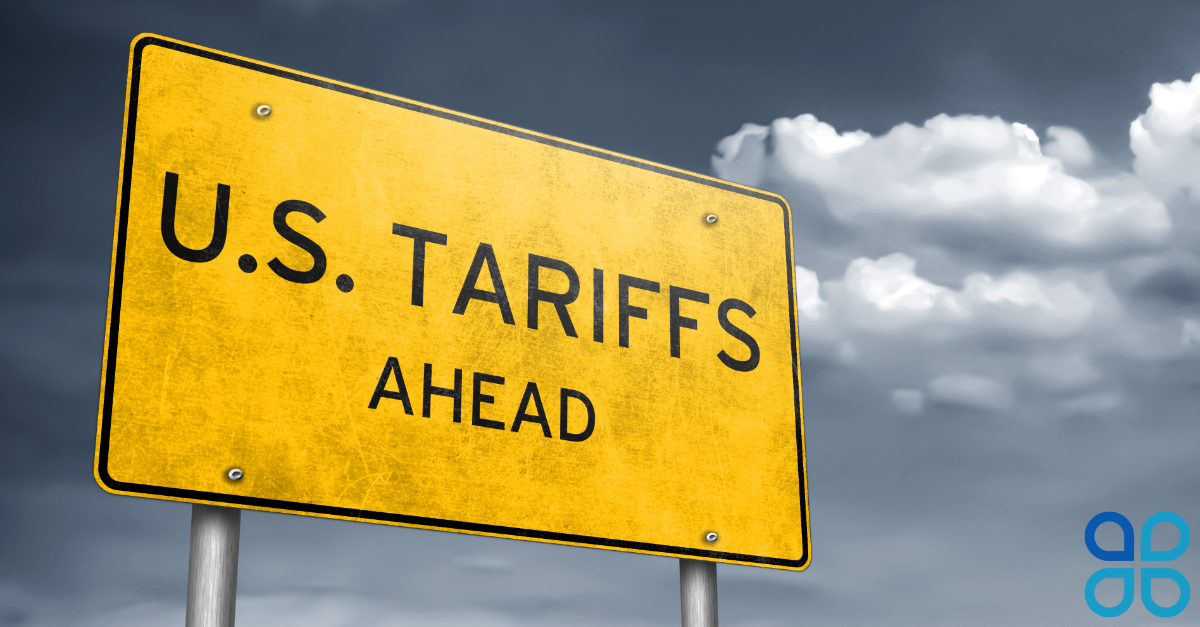A new round of sweeping U.S. tariffs is set to take effect this week, sending ripple effects across global supply chains and making a significant impact. These measures, which include a 25% tariff on imported automobiles and auto parts—among many other categories—signal a sharp escalation in trade policy. For business leaders, the message is clear: economic volatility is no longer a future scenario to plan for. It’s here, and it’s moving fast.
While some companies scramble to assess the implications, others are already activating playbooks. They’ve anticipated the risk, modeled the scenarios, and built resiliency into their supply chains. What separates these companies isn’t just luck or foresight—it’s structured, coordinated decision-making powered by Decision Intelligence (DI).
The Impact of Tariffs: A Policy Move with Business Consequences
Tariff policy decisions are among the most complex levers a government can pull. They sit at the intersection of domestic economics, political optics, and global diplomacy. When policymakers implement tariffs, it's rarely about one industry or country—it's about balancing a range of competing priorities:
- Consumer Impact: How will tariffs affect prices at the register and overall inflation? Will they create or cost jobs?
- Business Impact: Which companies will gain cost advantage, and which will face margin pressure or supply risk?
- Domestic Political Impact: Will the policy be viewed as protecting local industry—or as driving up costs for voters?
- International Relations: How will allies and trade partners respond? Are retaliatory measures likely?
These considerations are the domain of policymakers. But as those decisions are made—sometimes with little advance notice—their effects cascade immediately into the private sector, highlighting the profound impact of tariffs on global economic strategies.
In this environment, the ability to make sound, rapid decisions under pressure becomes a competitive differentiator. Every government policy move triggers a parallel wave of private-sector decisions—and the companies that can respond with speed, coordination, and clarity are the ones most likely to emerge stronger.
Winners, Losers, and the Squeezed Middle
As the tariffs roll out, the business implications vary widely across sectors. Some U.S.-based manufacturers, especially those with vertically integrated or regionally sourced operations, may gain competitive advantage. These businesses are less exposed to import costs and can price more flexibly as foreign rivals absorb higher tariffs.
On the flip side, industries heavily reliant on imported specialty products, EU-based goods, or globally sourced ingredients are likely to face margin pressure. These include categories such as specialty foods, beauty products, and furniture where global sourcing is deeply embedded.
In between, many companies with blended sourcing strategies—domestic assembly but imported components—will face mixed results depending on their flexibility and cost structure. For them, adaptability is everything.
A Resilient Response: Act Now—Delay Has a Cost
With tariffs taking effect imminently, there is no time for theoretical planning or waiting for policy clarity. Businesses must begin assessment and execution now—not days from now, but today.
1. Start the Assessment Immediately
The first move is to understand your exposure. Identify which products, suppliers, and regions the tariffs will impact. What customer segments will see price pressure? What contractual commitments may be impacted?
This rapid diagnostic work requires cross-functional collaboration—procurement, finance, supply chain, and commercial leaders must align fast. Decision Intelligence platforms can help surface high-impact categories, simulate cost implications, and prioritize actions.
2. Accelerate Decision-Making and Execution
Once exposure is clear, structured action is essential. This is not the moment for drawn-out meetings. Teams need access to up-to-date data, predefined triggers, and streamlined escalation paths.
Companies equipped with DI-enabled playbooks can move faster: activating alternative suppliers, adjusting pricing, renegotiating terms, and informing customers—all with minimal lag.
3. Capture What You’re Learning—In Real Time
Even as companies respond, they should be tracking the decisions they’re making, the assumptions behind them, and where bottlenecks occur. This isn’t a post-mortem exercise—it’s live learning.
By documenting decisions and feedback as events unfold, companies not only improve the current response—they lay the groundwork for being even faster next time.
Decision Intelligence: The Real Trade Advantage
Tariffs are not just a policy lever—they’re a real-time stress test for enterprise agility. In a world where trade rules can change overnight, companies must shift from reactive analysis to proactive execution.
That’s the value of Decision Intelligence. It’s not just about data. It’s about making smarter decisions—faster, together, and at scale. Whether you're facing tariffs, regulatory changes, or supply chain shocks, DI creates the structure to act with confidence.
Rethinking Trade Resilience Amid the Impact of Tariffs
The latest tariff measures are a reminder that no industry is immune to policy volatility. But with the right approach, businesses can turn disruption into opportunity.
Is your team ready to make decisions at the speed of change? If not, now is the time to implement the frameworks and tools that turn chaos into clarity—and action into advantage. Schedule a demo with Cloverpop today.

